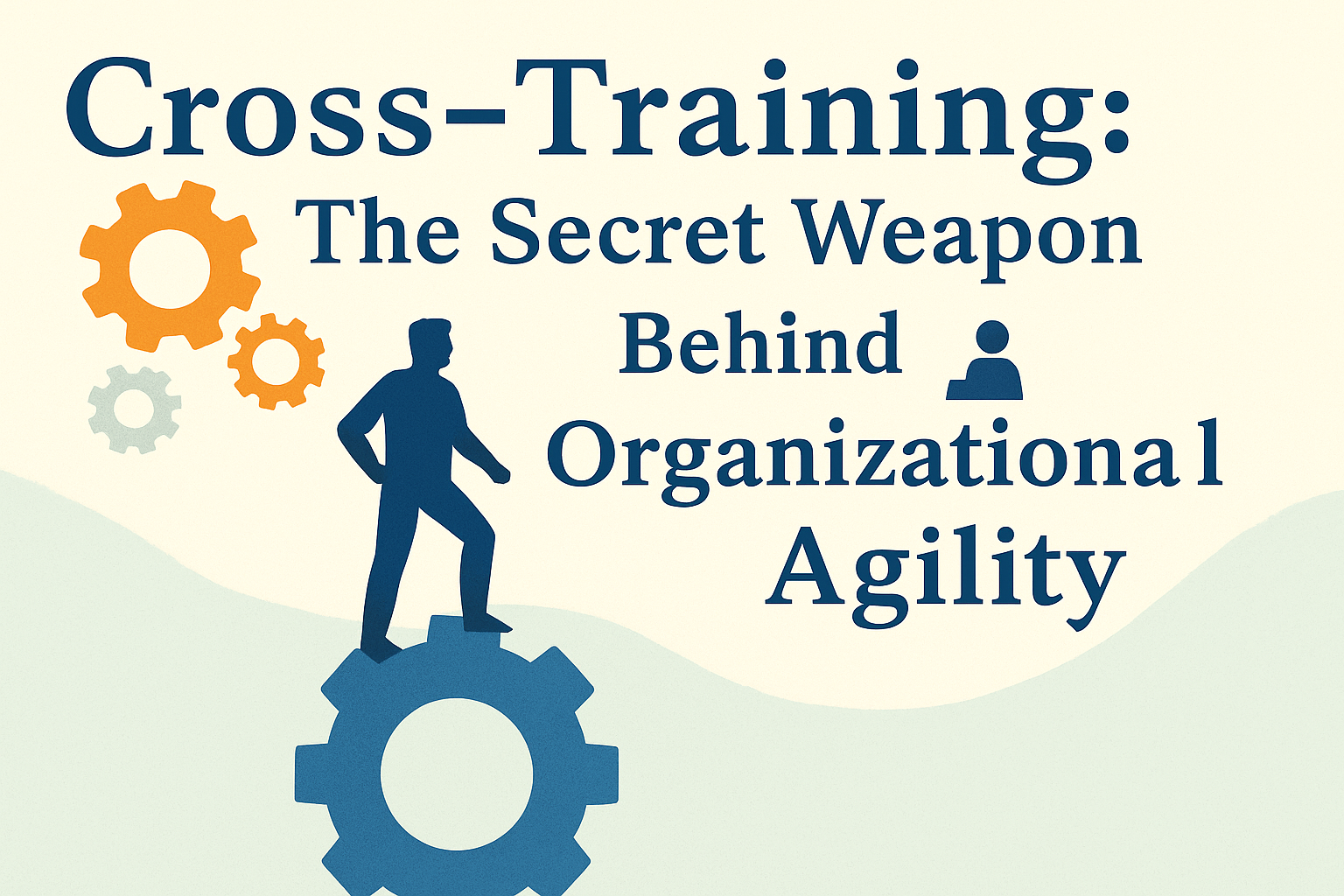
Remember that one coworker who single-handedly saved Black Friday when half the team called in sick? Or the time your developer pitched in on customer support because traffic spiked unexpectedly? That wasn’t luck—it was agility in action. And the secret ingredient behind that agility? Cross-training. Think of cross-training as insurance against burnout, bottlenecks, and business interruptions.
Cross-training goes beyond preparing someone to cover lunch breaks. It equips employees with complementary skills, letting them step in when someone’s absent or overloaded. Organizations that embrace this approach find themselves more resilient, more innovative, and far better equipped to handle change.
Cross-training creates a workforce that can pivot quickly in response to shifting needs—essential in environments where plans change faster than the office coffee disappears. Companies with cross-trained employees are not only more agile, but they handle unexpected challenges with a calm confidence that can’t be faked.
In manufacturing, machine operators trained in quality control can triage issues on the fly. In retail, cashiers who can step in as sales associates ease customer flow during peak hours. This kind of built-in organizational flexibility isn’t just nice—it’s critical.
We’ve all seen it happen: when the go-to Excel expert is on vacation, the entire office workflow grinds to a halt. Cross-training helps organizations avoid these bottlenecks by spreading knowledge across the team. It’s a straightforward way to reduce the risk that one person’s absence becomes everyone’s problem.
Instead of putting all your eggs in Bob’s spreadsheet, you’re distributing skills across a wider net. That’s not just risk management—it’s smart business.
When people understand what their teammates do, they collaborate more effectively. Cross-training breaks down silos and fosters mutual respect. It helps team members appreciate the challenges of other roles, which leads to smoother project handoffs and a stronger team dynamic.
Research backs this up: organizations with cross-trained employees see improved engagement, communication, and productivity. It’s like team bonding, only with fewer trust falls and more actual value.
No one likes to feel stuck. Cross-training offers employees fresh challenges, career development, and a sense that their employer believes in their potential. That’s a powerful motivator.
It’s also a retention tool. Employees who feel they’re growing are more likely to stay. A well-planned cross-training strategy can turn “I’m bored” into “I’m learning”—which is great news for both morale and your HR budget.
Turnover happens—and often when it’s least convenient. Cross-training creates an internal talent pipeline that helps organizations adapt quickly. When someone leaves, someone else is already in the wings, ready to step up.
It’s also a great way to spot hidden talent. Employees might discover strengths in areas they’d never considered, and managers gain new insight into who’s ready for the next level.
Hiring is expensive. So is onboarding. Cross-training offers a budget-friendly way to get more out of your current team. Instead of scrambling to bring in temps or paying overtime, you’ve already built a team that can flex to meet demand.
Compared to the average $4,100 cost of hiring a new employee, the cost of training existing employees is often just $1,500—a solid return on investment
It’s cost-effective agility—and a great way to ensure coverage without blowing up your budget.
When employees are exposed to different roles, they bring fresh eyes to familiar problems. Cross-training often sparks ideas that wouldn’t emerge in a siloed environment. Someone from support might suggest a tweak to improve a product, or a finance team member might spot inefficiencies in a customer workflow.
Cross-training broadens perspectives—and broader perspectives lead to better solutions.
Cross-training works best when it’s done thoughtfully. Start by tying it to real business needs: backup coverage, succession planning, or skill expansion. Then, choose employees who are curious and capable—and make sure their regular workload allows time to learn.
Structure the process with job shadowing, skill-sharing sessions, and learning goals. Track progress with skill matrices, celebrate milestones, and recognize people who step up. And perhaps most importantly, communicate clearly.
When employees understand that cross-training is about growth and team strength—not cost-cutting—they’re far more likely to embrace it.
Cross-training isn’t a passing trend—it’s a strategic advantage. It builds organizational flexibility, sharpens skills, and creates a culture of continuous learning. Teams that embrace it are more agile, more connected, and more prepared for whatever comes next.
Build it into your training strategy. Encourage employees to explore new roles. Celebrate the wins—and watch your team become more resilient, more capable, and more collaborative.